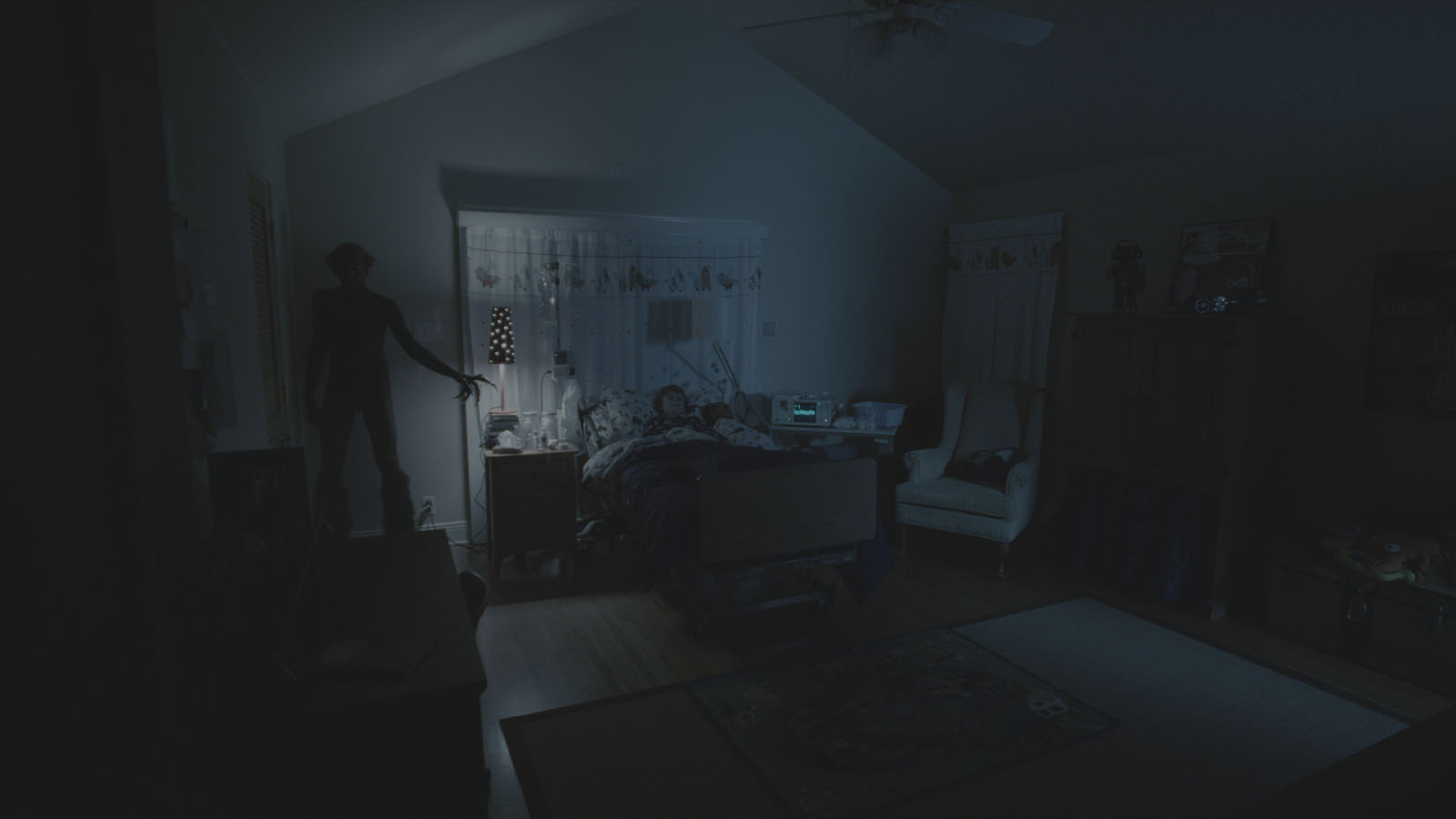
Last night I watched myself sleep then I flew away, a young boy named Dalton writes in crayon shortly before his spirit leaves his physical body and becomes prey to a horde of demons and ghosts in a dark realm called The Further. The Insidious franchise features all manner of horrors, psychological, spiritual, phantasmagoric, and weird. Often, the monsters encountered look like garish cartoons come to life, whether red-faced half-goat goblins or greasepaint-slick living dolls. The trials its characters face sometimes border on the cruel. But it’s this line, which appears in the first film beneath a drawing of Dalton flying in the night sky like Superman, that chills most. It communicates something that would be near impossible to visualize convincingly in a movie: a fantastical memory accepted easily and seriously as only a child could, and one that, in this franchise’s context, signals the presence of dangerous, evil-beckoning supernatural powers.
Insidious began with its first installment in 2010, a product of collaboration between director James Wan and writer Leigh Whannell, who together created the Saw franchise in 2004. While the latter property spawned numerous sequels that whet bloodthirsty appetites with escalating sequences of gore and torture, Insidious went in a far more esoteric direction. Astral projection, possession, cross-dressing serial killers, seances, paranormal investigators—the franchise is a grab bag of horror tropes and archetypes idiosyncratically melded into a story about where we go after we fall asleep. Of course, given that franchises extending past two or even three movies usually diminish in quality, it’s worth saying that the “good” ones, Insidious and Insidious: Chapter 2 (2013) are where the series excels and where most audiences can feel comfortable stopping without missing much. But, for the fans, each offers something respectably stranger and more disturbing than half the major horror releases that come and then disappear each year.
In the first film, we meet Dalton’s family, the Lamberts, whose world is turned inside out when Dalton slips into a coma. The Lamberts are the definition of a typical family, at least in movie terms, and they’re a narrative black hole that the franchise continually references in the movies where they aren’t the main characters. Josh (Patrick Wilson), the husband and father, works as a teacher, while Renai (Rose Byrne) stays at home with their two boys and infant daughter. When the family moves into a new house, things begin to go bump in the night, but not before the audience is introduced, via a hazy black-and-white opening shot, to what may be the closest thing the Insidious movies have to a main villain: The Bride in Black; more on that later.
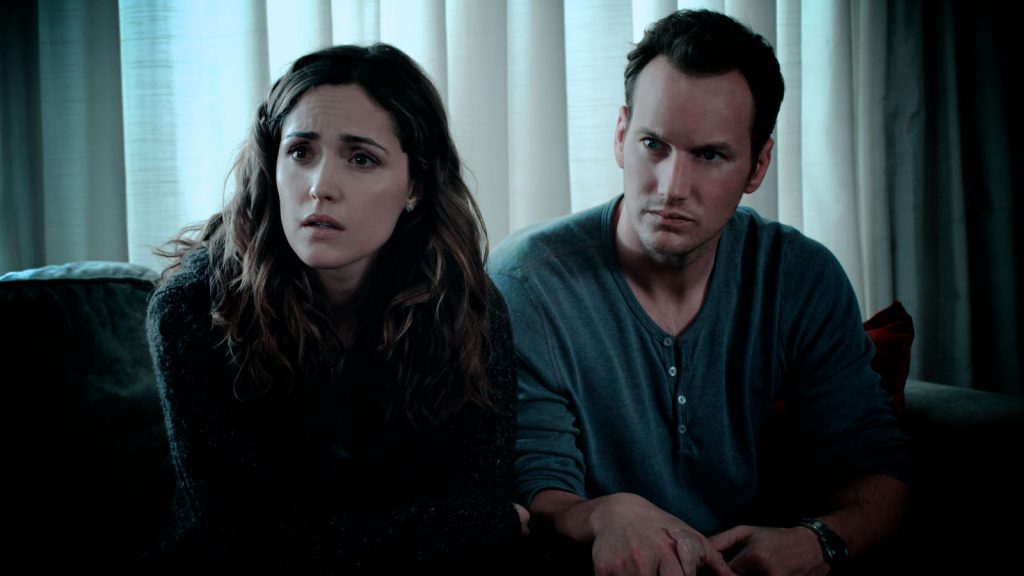
Dalton is comatose for over three months, and science can’t seem to figure out why. Josh has been making lame excuses to stay late at work each night, avoiding the turmoil in his home seemingly without reason (to his wife), but clearly (to the audience) because he’s avoiding the emotional consequences. Meanwhile, Renai fields mysterious happenings. She hears voices over the baby monitor. She sees a man in a black trench coat pacing outside her bedroom. She sees a child dressed in mid-20th-century clothing dancing in front of the record player. Of course, the assumption is ghosts, or, as Josh briefly believes, hysteria. But Insidious turns a neat corner here.
When the Lamberts consult psychic Elise Rainier (Lin Shaye), the franchise’s superhero, we learn that ghosts are only half the story. Dalton has the ability to astral project and, as Elise explains, because he’s been doing so in his sleep, he brushes off his encounters as dreams. There are hundreds of realms that can be traveled to this way, but Dalton has wandered too far, into a place called The Further, home of dead souls and malevolent beings that were never human to begin with. The entities that have been plaguing the family house are dead, yes, but they aren’t the souls of people who once lived there. Instead, like vultures circling carrion, they’re ghosts drawn to Dalton’s empty body.
The strangeness of this narrative choice is left mostly to dialogue. Across the franchise, Wan and Whannell shy away from illustrating the process of astral projection beyond simple, deliberately low-budget methods. Those who have this supernatural ability simply step out of their dormant bodies and find themselves in The Further, a kind of photo negative of the real world, where a constant layer of fog permeates the ground and passage can only be gained via lamplight. The Further is an all-purpose realm. It acts as a chthonic mass grave and also a conduit of memory. In Insidious: Chapter 3 (2015), we see souls trapped in environmental loops pertinent to the circumstances of their deaths. A young woman stands in the doorway of an apartment, the background behind her a nighttime street in the pouring rain. In Insidious: Chapter 2, we witness the painful origins of The Bride in Black, who is really the twisted soul of a serial killer named Parker Crane, played out like warm home videos.
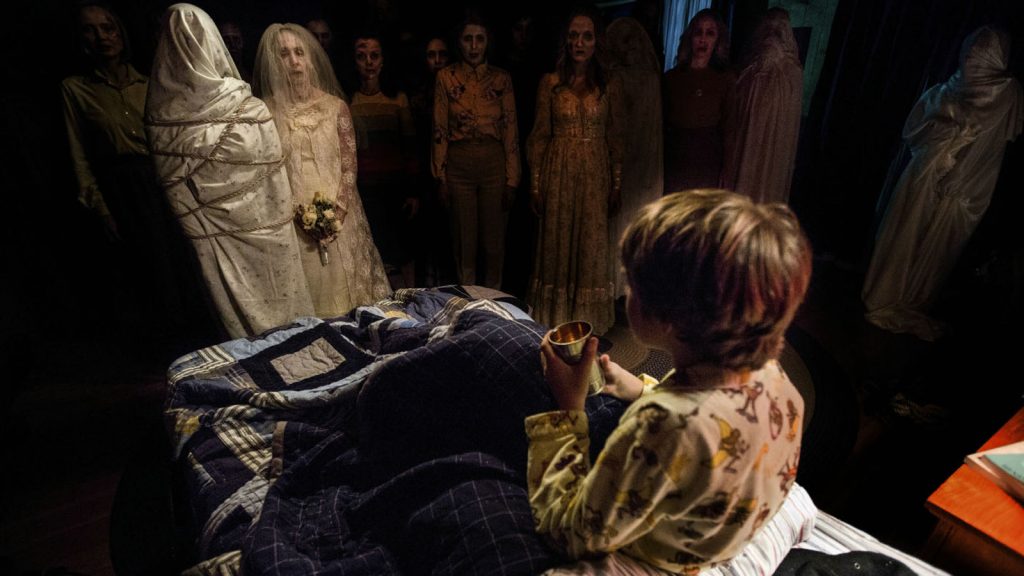
The unsettling, often hallucinatory world of The Further is almost always entered or exposited via Elise, who takes over the franchise as the main hero after Chapter 2. This is the real strength, and lasting badge of honor, of the Insidious movies. Lin Shaye, a veteran scream queen of the highest order whose turn in A Nightmare on Elm Street underlines the clear influence (terror found in dreams) that film has on the franchise, imbues Elise with a sense of divine purpose mixed with doubt and anguish. As a lead in films 3 and 4, she treads lightly but confidently, especially during long scenes of exposition that would make next to no sense if read on a page. Because of this, Shaye is often the only actor in the cast of the latter films who feels at ease with what they’re saying and what it means. Wan, who stepped back into a producing role following Chapter 2, and Whannell, who has written the first four screenplays, chose to keep Elise as a prominent, essential component of the series, knowing, perhaps, that after the Lamberts’ story had ended, no other family or new character would be nearly as interesting.
And, much as I love these movies, this is the sad truth about them. Installments 3 and 4 are the fun type of bad, at least, but they fall frustratingly short of the narrative and visual heights reached in the first two. The Lamberts, and their deep connection with Elise, provided such clear, firm ground for a self-contained duology that it feels like a betrayal to follow anyone else. Whannell, who directed Chapter 3, and Adam Robitel, who directed Insidious: The Last Key (2018), don’t have the same directing chops as Wan, who understands the line between bad acting and melodrama, between tension and tedium, between enjoyably excessive and cheaply over-the-top. In Wan’s absence, what’s left is the originality of the core idea, which manages to elevate even the most rudimentary of scares into something with depth and resonance. A lot of goodwill has been extended because of the first two films, enough for Wan’s muse, Patrick Wilson, to hang his hat on a first-time directing gig in the future. But it’s more than that. One has to believe the reason the franchise isn’t toast is because Insidious presents a rich world filled with so many interesting bits of mythology that, with the right characters, there’s no reason to say no to stepping into it again. Where we go in our dreams, and where we go when we die, are fruitful questions that are nonetheless often mishandled with literalism and a lack of imagination. Insidious takes glee in the hilarious and frightening areas of that conversation, with vivid monsters and just enough sincerity to understand that its creators care and want you to care as well.
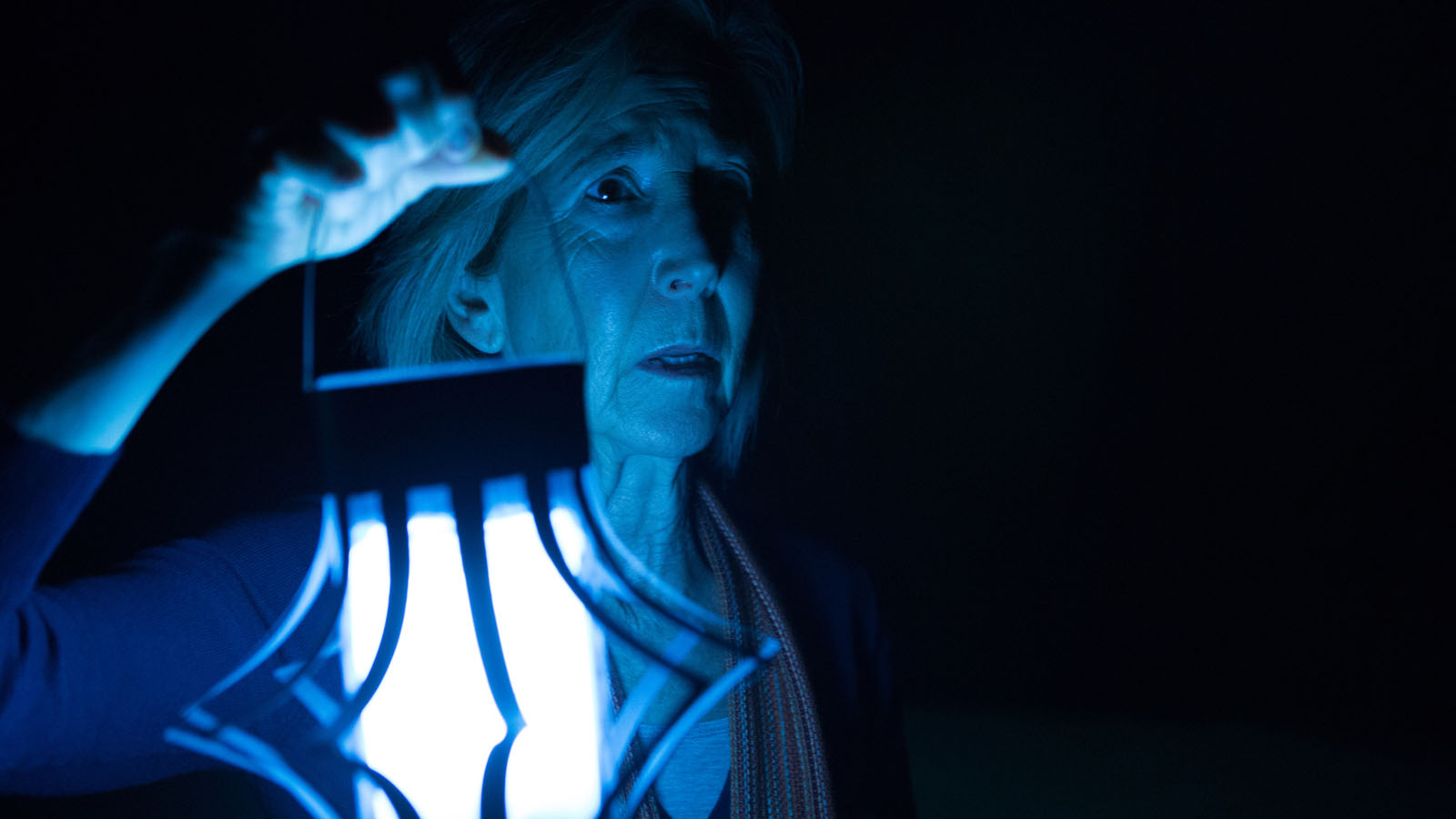
How time changes things. Back in early 2022, when I wrote the above piece, I had thought there would be little left to say about Insidious, even as I acknowledged that another installment was already in the works. It’s true that, through the horror industry’s various contortions between “elevated” fare like Hereditary and sloppy franchise retreads like the most recent Halloween trilogy, by contrast, the Insidious films only grew in estimation for their originality. They are admirably bizarre works crafted by many hands whose traces have not been erased. Which is to say that, among the franchise’s pleasures, the tangible, physical representations of the otherworldly and ephemeral—those foggy sets like black-box theater stages, those weathered photos like archaeological artifacts, the smudges of makeup on ghostly corpses, the clang and crash of Joseph Bishara’s startling score, which sounds half made up of recordings of pianos being thrown down stairs—instill a sense of longevity and specificity.
These are films about memory and forgetting, after all. It’s perhaps a happy coincidence that what is most salient about Insidious is the way it refuses to let its most jarring images, whether bad dreams or malevolent entities, fade into plausible deniability. Once the audience is introduced to the mythology, all bets are off and there’s no turning back; whatever you’re hiding from will be there to greet you.
In Insidious: The Red Door, the fifth, and likely final, installment of the series, the Lamberts return to bring the family’s narrative to a full-circle conclusion. As I previously noted, though Lin Shaye’s indelible turn as Elise acts as the beating heart of the franchise, the Lamberts were always its true protagonists. Fitting, then, that Patrick Wilson, who has pulled double duty as a paranormally-set-upon husband in two of James Wan’s disparate horror franchises, mirrors that effort here as both actor and director. The Red Door, in Wilson’s hands, is easily Insidious’s most emotionally mature and affecting entry. Wan, whose penchant for arch sentimentality can be cloying at times, imbued the first two films with his trademark dash of hyperactive impassioned excitement and psychological obviousness, traits that, when marshaled precisely, have truly dazzling effects. The series’ closing chapter sets off in a slightly skewed direction.
Nine years have passed since the Lamberts defeated The Bride in Black, with Josh and Dalton subsequently having their memories of the entire year erased, including their ability to astral project. Now, Josh’s mother, Lorraine, is dead, while Renai and Josh are divorced. Their baby daughter is now a young girl, Dalton’s brother, Foster, is in high school, and Dalton is about to leave for college. Over the years, Josh has been plagued by a mental fogginess he can’t shake, one that has resulted in him being increasingly distant from his family. So when he volunteers, at Renai’s behest, to drive Dalton to school and help him settle in, it is with no small amount of reluctance and skepticism that Dalton accepts. For his part, Dalton has grown into a gifted artist, sketching and painting portraits of his family (notably, not his father) and hazy dreams that might also be memories.
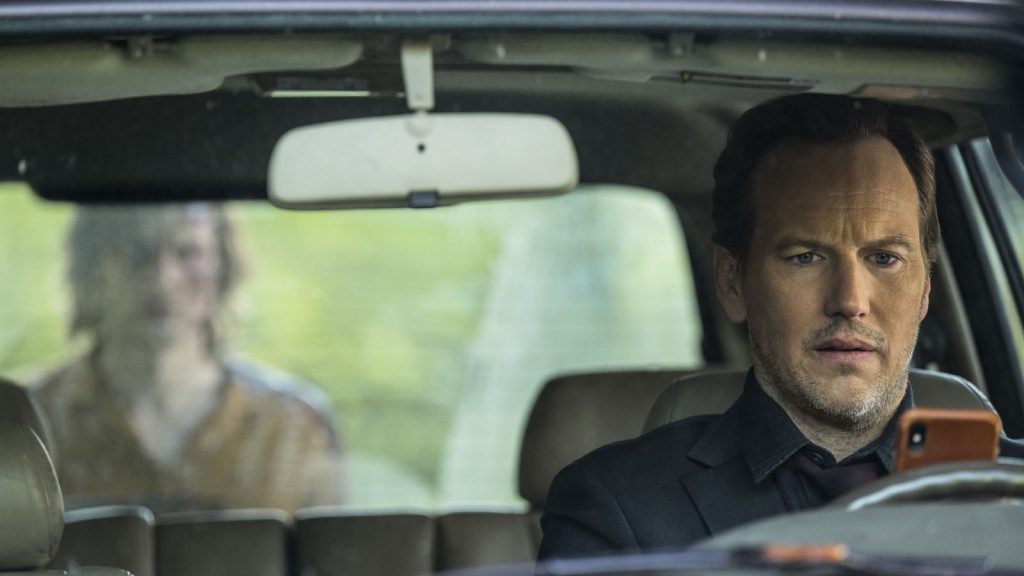
As a longtime fan of the franchise, it’s hard, though maybe obvious, not to be momentarily bowled over by how astoundingly grown-up actor Ty Simpkins looks compared to his 9-year-old self from the first Insidious. Dalton had, up to this point, remained the vulnerable boy. Simpkins is now 21, and one of the new film’s smartest choices is to constantly foreground how much that changes our conception of Dalton. Indeed, The Red Door takes full advantage of the time-warping properties of The Further, throwing its characters into the past to spectate and even participate in scenes that occurred during the initial two films. Wilson and his crew expertly meld previous footage with new insertions, matching the look and feel of choice sequences without the need for rubbery de-aging CGI.
At school, Dalton sinks into his work, pushed and challenged by Professor Armagan (Hiam Abbass) to delve deep beneath the subconscious. Doing so triggers both suppressed memories of that terrible year when Dalton was a child and his father was possessed and his ability to astral project. Meanwhile, Josh seeks psychiatric help for his fogginess, dredging up redacted family history that reframes everything he thought he knew about his father. In the midst of these parallel narratives, the entities of The Further clamber for attention, the desperate but benevolent at first indistinguishable from the evil. Dalton and Josh separately encounter the ghosts of people who have been, in one way or another, locked away or deliberately forgotten. In many aspects, The Red Door is a father-and-son story, as well as Wilson’s way of reconciling the pattern of willful ignorance that has plagued the Lamberts.
During a sequence where Dalton sketches the titular door, which leads to the lair of the iconic red-faced demon, Dalton, through his angst-ridden attempts to understand his father and the itching sense that something is being hidden within the family, unwittingly opens that very door. Art plays a prominent, if slightly literal, role in the film, a conduit of memory and emotion but also a generational reckoning, a father’s guilt translated by his child into a son’s shame. This makes for a fraught, suspenseful final chapter, one that trades shock for uncertainty. It’s not that The Red Door is less scary than the other films, but because the audience is now so steeped in the emotional and historical context of the Lamberts, the panoply of horrors on display can’t help but be familiar. Still, such familiarity is welcome and handled with care. What Wilson achieves is the franchise’s most aesthetically pleasing and coherent entry, a shadowy, sweat-sheened drama of nightmares and intrusive recollections.
The Red Door is a film about closing loops, and rather than luxuriate in the by-now-recognizable novelties of The Further, it pushes forward toward a cathartic conclusion. Really, it is a testament to the sometimes-confusing longevity of the Insidious franchise that its filmmakers were able to put a definitive, moving stamp on what could have easily been an ultimately exhausted property. That Wilson makes his directorial debut with the fifth installment speaks perhaps not only to his attachment to this story and these characters but also to the narrative plasticity of the franchise. There’s a case to be made that Insidious contains a little bit of everything, never a guaranteed positive, and that in its worst moments, it leans into an imprecise generality. The Red Door, then, is a swerve back toward true north, winding its way through Insidious’s most memorable past to close out on a future of possibility. 🩸

is a writer from Las Vegas. His writing has appeared in The Believer, Reverse Shot, Bright Wall/Dark Room, Vulture, and Film Comment, among other publications. He is a columnist at Gawker.
Pauline Kael’s New Yorker review of The Exorcist was published the first week of January 1974, just after the film’s intentionally...
BY NICHOLAS RUSSELL | October 13, 2023
A horde of diabolical children have preceded Esther of Orphan (2009), directed by Jaume Collet-Serra, but she has secured a place among horror cinema’s most memorable...
BY KELLI WESTON | April 28, 2023
Of the many recurring horror villains, Freddy Krueger is famously distinguished by his crispy face and razor claws, Jason Voorhees by his hockey mask and machete, and Leatherface by...
BY LAURA KERN | August 17, 2022
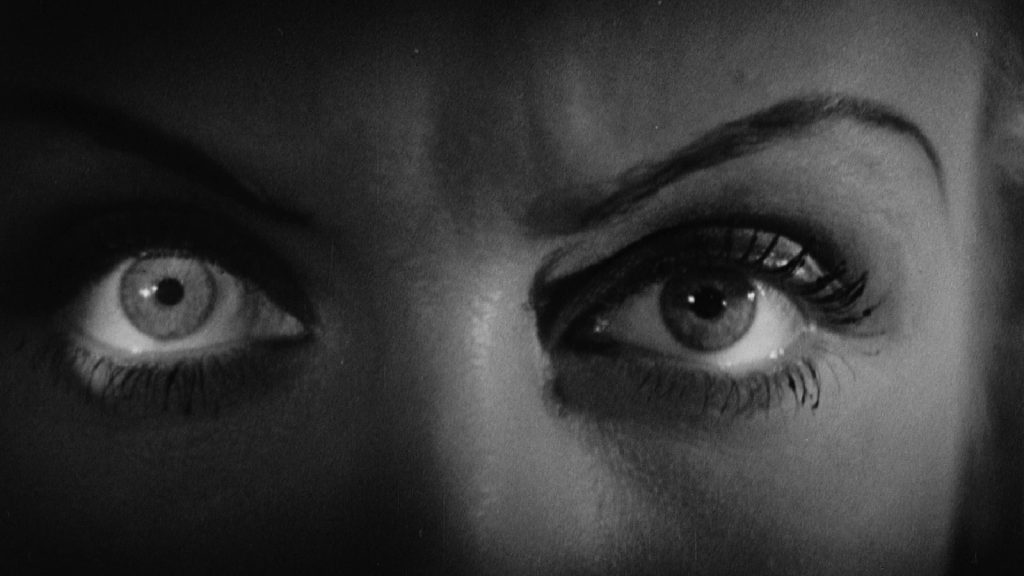
This pre-Code offering packs a lot of story into its typically brisk running time, with several plot threads weaving together a (not always successful) tapestry of spooky and criminal doings.
READ MORE >
BY ANN OLSSON | Month 00, 2021
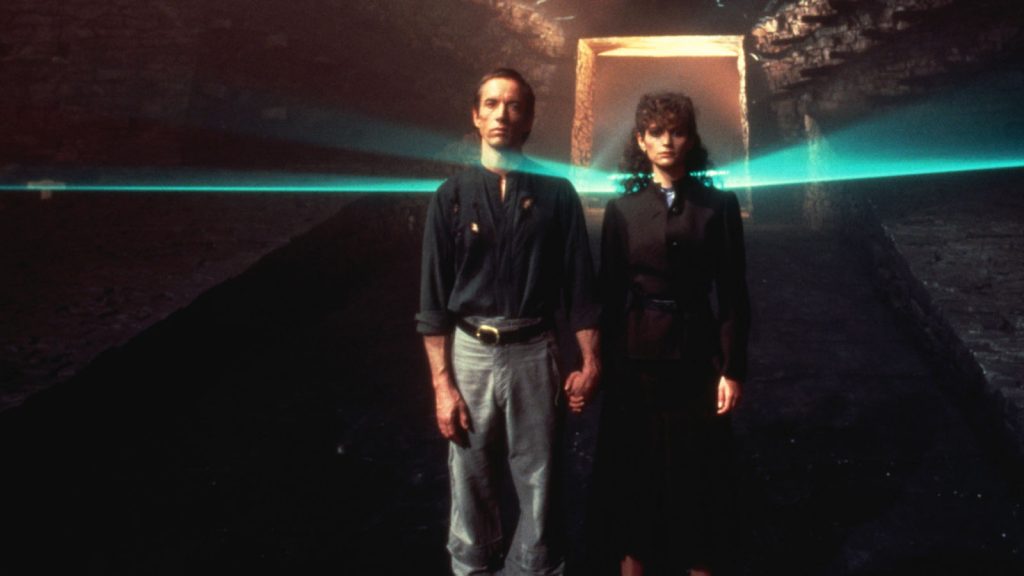
In what could be the fastest-resulting rape revenge movie, a drunken lout brutally forces himself on Ida, the young woman who doesn't return his affections, during a party over Labor Day.
READ MORE >
BY LAURA KERN | Month 00, 2021
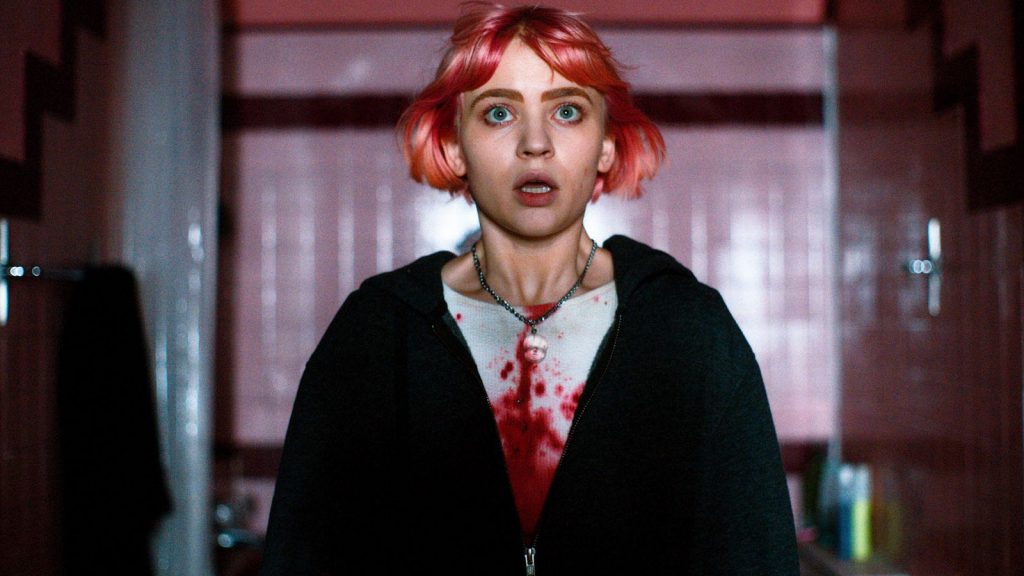
Beast is a lot of movies in one package - fractured fairy tale, belated-coming-of-age story, psychological drama, regional horror film - but above all it's a calling card for its leading lady, Jessie Buckley.
READ MORE >
BY LAURA KERN | Month 00, 2021